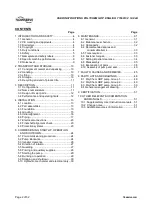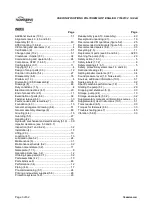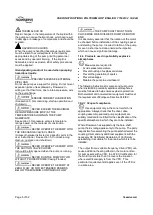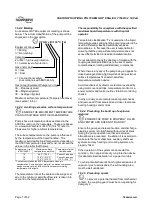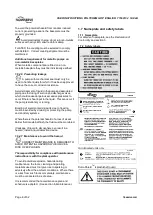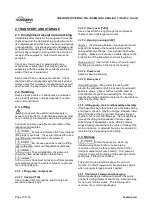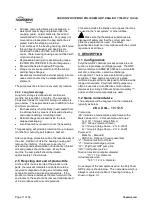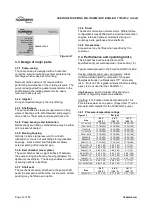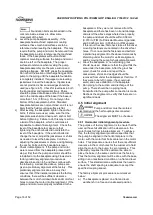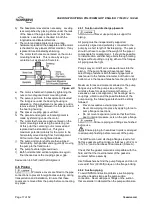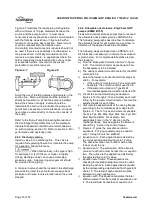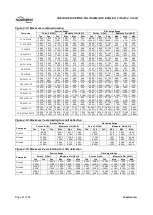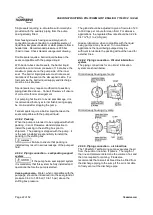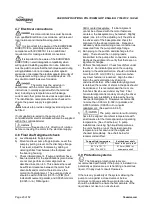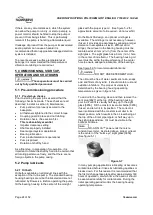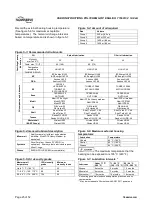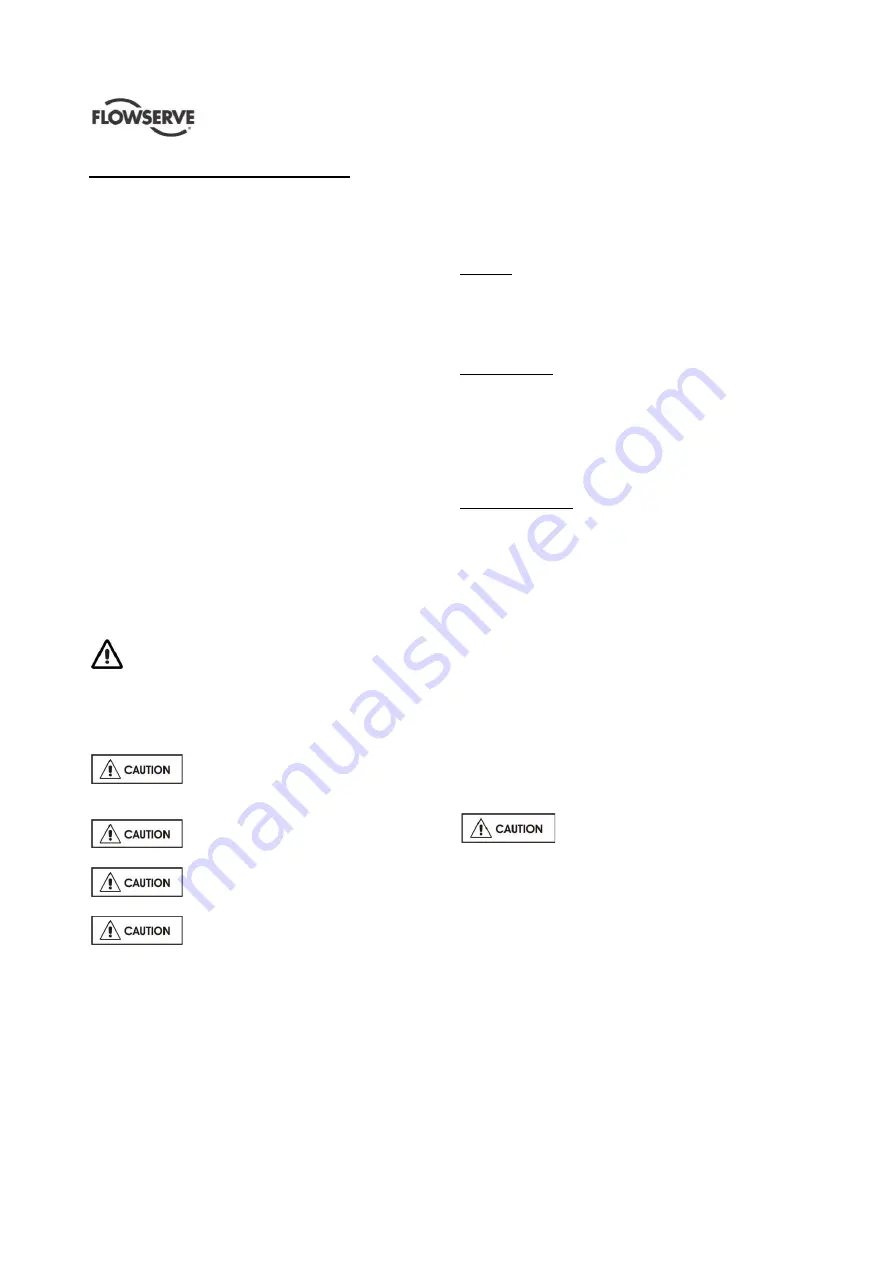
USER INSTRUCTIONS POLYCHEM GRP ENGLISH 71569132 12-04A
Page 10 of 52
flowserve.com
2 TRANSPORT AND STORAGE
2.1 Consignment receipt and unpacking
Immediately after receipt of the equipment it must be
checked against the delivery/shipping documents for
its completeness and that there has been no damage
in transportation. Any shortage and/or damage must
be reported immediately to Flowserve Pump Division
and must be received in writing within one month of
receipt of the equipment. Later claims cannot be
accepted.
Check any crate, boxes or wrappings for any
accessories or spare parts that may be packed
separately with the equipment or attached to side
walls of the box or equipment.
Each product has a unique serial number. Check
that this number corresponds with that advised and
always quote this number in correspondence as well
as when ordering spare parts or further accessories.
2.2 Handling
Boxes, crates, pallets or cartons may be unloaded
using fork lift vehicles or slings dependent on their
size and construction.
2.3 Lifting
A crane must be used for all pump sets in
excess of 25 kg (55 lb). Fully trained personnel must
carry out lifting, in accordance with local regulations.
The driver and pump weights are recorded on their
respective nameplates.
Pumps and motors often have integral
lifting lugs or eye bolts. These are intended for use in
only lifting the individual piece of equipment.
Do not use eye bolts or cast-in lifting
lugs to lift pump, motor and baseplate assemblies.
To avoid distortion, the pump unit
should be lifted as described in this section.
Care must be taken to lift components
or assemblies above the center of gravity to prevent
the unit from flipping.
2.3.1 Lifting pump components
2.3.1.1 Casing [1100]
Use a choker hitch through the suction hole and
around the casing body.
2.3.1.2 Rear cover [1220]
Use a choker hitch slung through the central seal
chamber hole to lift large rear covers.
2.3.1.3 Bearing housing [3200]
Group 1.
Insert a sling between the upper and lower
support ribs between the housing barrel and the
casing attachment flange. Use a choker hitch when
slinging. (Make sure there are no sharp edges on the
bottom side of the ribs which could cut the sling.)
Group 2 and 3
. Insert either a sling or hook through
the lifting lug located on the top of the housing.
2.3.1.4 Power end
Same as bearing housing.
2.3.1.5 Bare pump
Horizontal pumps
. Sling under the casing and
around the outboard end of the bearing housing with
separate slings. Choker hitches must be used at
both attachment points and pulled tight. The sling
lengths should be adjusted to balance the load before
attaching the lifting hook.
2.3.2 Lifting pump, motor and baseplate assembly
If the baseplate has lifting holes cut in the sides at the
end (type A Group 3, type D, and type E bases) insert
lifting S hooks at the four corners and use slings or
chains to connect to the lifting eye. Do not use slings
through the lifting holes because of sharp edges.
Other styles of baseplates can be lifted by placing
slings slightly outboard from the center of mass of the
motor and pump. A spreader bar may be required to
maintain the sling spacing during lifting.
2.4 Storage
Store the pump in a clean, dry
location away from vibration. Leave piping
connection covers in place to keep dirt and other
foreign material out of pump casing. Turn pump at
intervals to prevent brinelling of the bearings and the
seal faces, if fitted, from sticking.
The pump may be stored as above for up to six
months. Consult Flowserve for preservative actions
when a longer storage period is needed.
2.4.1 Short term storage and packaging
Normal packaging is designed to protect the pump
and parts during shipment and for dry, indoor storage
for up to six months or less. The following is an
overview of our normal packaging:


